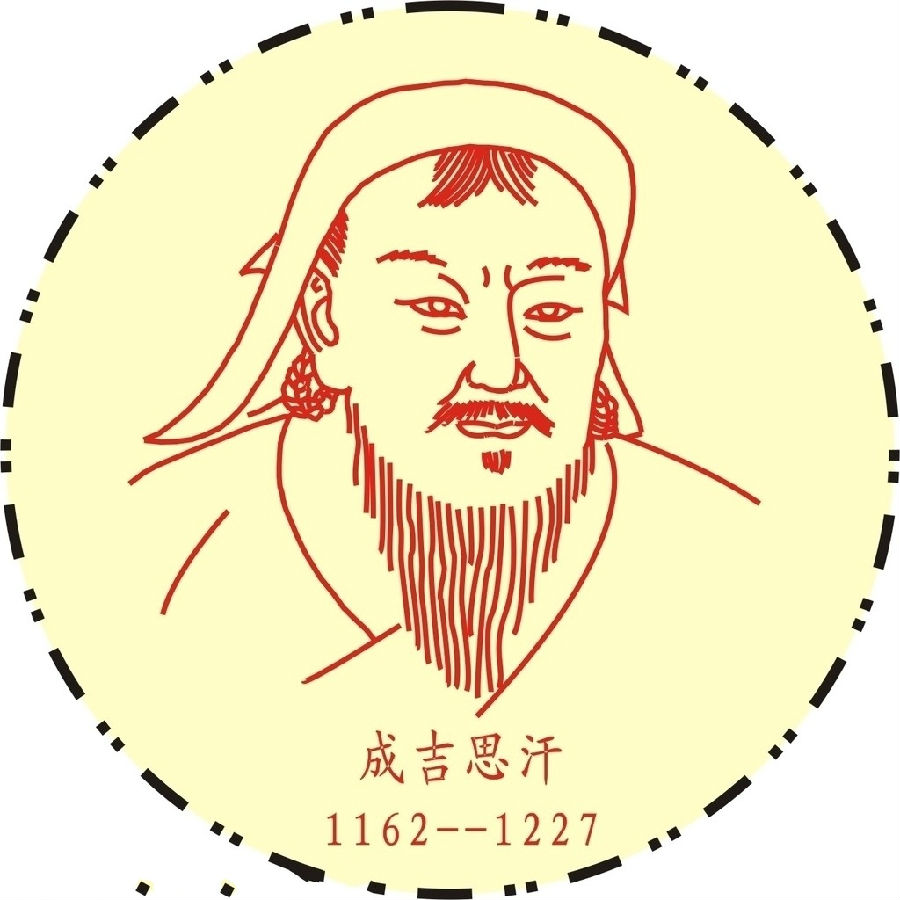Yuan Dynasty
元朝
The Rise of Mongols
蒙古的崛起
The Mongols were formerly a tribe roaming the upper reaches of the Argun River.
蒙古族原先是游荡在阿尔贡河上游的一支游牧民族。
Later they moved to live in the Valleys of the Onon and Kerulen rivers.
之后,他们移居至鄂嫩河和克鲁伦河。
With the passage of time, they rose to become a powerful tribe.
随着时间的流逝,蒙古族逐渐成为一个强大的部落。
During the period from the late 12th to the early 13th century, Temujin consolidated all the Mongol tribes and placed under his leadership a centralized Khanate which brought the Mongols to a new stage of development.
从12世纪晚期到13世纪早期,铁木真联合了所有蒙古部落并把它们收至自己领导的中央集权制的汗国麾下,这使得蒙古发展到了一个新阶段。
In 1206, he had a clan conference held on the bank of the Onon River, at which he was proclaimed the Great Khan, with the reign title of Genghis Khan.
1206年,他在鄂嫩河畔召开了家族会议并宣布自己为“大汗”,统治头衔为“成吉思汗”。
He was later known as Emperor Taizu of the Yuan Dynasty.
铁木真之后被称为元太祖。

Genghis Khan organized his army and all the adults of his Mongol tribe according to a decimal system.
成吉思汗通过十进制来组织军队和他的蒙古部落的所有成年男子。
He personally selected an elite force of 10000 which served as a basic striking unit.
他亲自挑选了10000人马的精锐部队作为基本的作战队伍。
He transformed customary laws into written laws so as to specify the special privileges of the nobility and to tighten the control of the herdsmen slaves.
他将习惯法转变为成文法,以此来明确贵族的特权并加大对于牧民奴隶的控制。
The enforcement of military discipline and the completion of written laws added to the strength of the Mongol Khanate based on slavery.
军纪的实施以及成文法的完善加强了以奴隶制为基础的蒙古国的实力。
For a long period, Genghis Khan and his successors Ogdai Khan and Mangu Khan conquered and seized territories both in the south and in the western regions.
很长一段时间内,成吉思汗和他的继承人窝阔台可汗以及蒙哥可汗都征服并掌控了南方和西方地区的领土。
In the south their attacks were directed against the Xia, the Jin, and the Song ;in the western regions, their conquest extended as far as Central Europe.
他们向南对夏国、金国和宋国进行攻击;向西征服的地区远至中欧。











